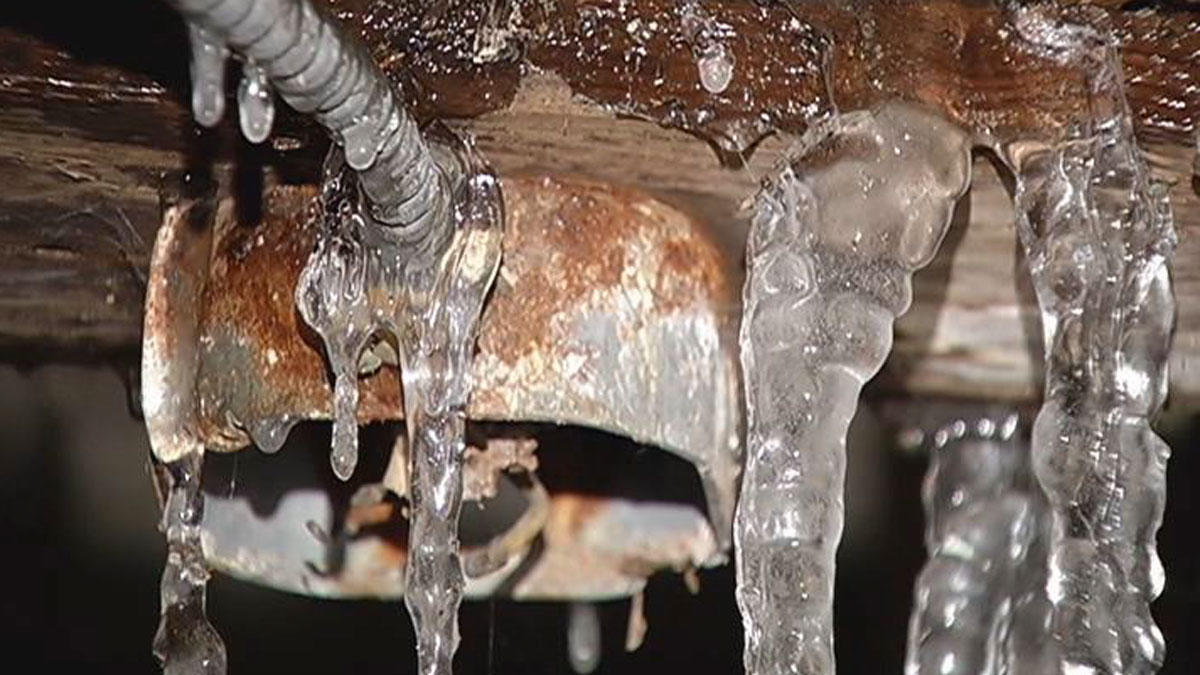Safeguarding Pipes from Cold Weather Damage: Critical Tips
Safeguarding Pipes from Cold Weather Damage: Critical Tips
Blog Article
What are your opinions about Preventing and dealing with frozen pipes?

Winter can wreak havoc on your pipes, specifically by freezing pipelines. Here's just how to prevent it from taking place and what to do if it does.
Introduction
As temperatures drop, the danger of frozen pipelines boosts, potentially causing costly repair work and water damage. Understanding how to prevent frozen pipelines is vital for property owners in cool environments.
Comprehending Frozen Pipes
What triggers pipes to ice up?
Pipelines ice up when exposed to temperatures below 32 ° F (0 ° C) for expanded periods. As water inside the pipelines freezes, it broadens, taxing the pipeline wall surfaces and possibly triggering them to rupture.
Risks and problems
Icy pipes can bring about water system disruptions, home damage, and costly repairs. Ruptured pipelines can flood homes and create considerable architectural damage.
Indications of Frozen Water Lines
Determining icy pipelines early can avoid them from bursting.
Just how to identify icy pipes
Search for lowered water circulation from faucets, unusual smells or noises from pipelines, and visible frost on exposed pipes.
Avoidance Tips
Insulating vulnerable pipes
Cover pipelines in insulation sleeves or utilize warm tape to shield them from freezing temperatures. Focus on pipelines in unheated or outside areas of the home.
Home heating methods
Maintain interior spaces effectively heated, specifically locations with pipes. Open cupboard doors to permit warm air to circulate around pipes under sinks.
Safeguarding Outdoor Pipes
Yard tubes and exterior faucets
Separate and drain pipes garden tubes prior to winter. Set up frost-proof faucets or cover outdoor taps with shielded caps.
What to Do If Your Pipelines Freeze
Immediate activities to take
If you suspect icy pipes, maintain taps open up to eliminate pressure as the ice thaws. Make use of a hairdryer or towels soaked in warm water to thaw pipelines slowly.
Long-Term Solutions
Structural modifications
Take into consideration rerouting pipes away from outside walls or unheated locations. Add extra insulation to attics, cellars, and crawl spaces.
Upgrading insulation
Purchase top quality insulation for pipes, attic rooms, and walls. Appropriate insulation assists maintain consistent temperature levels and reduces the danger of icy pipelines.
Conclusion
Stopping frozen pipes requires proactive measures and fast responses. By recognizing the causes, signs, and safety nets, homeowners can shield their plumbing throughout winter.
5 Ways to Prevent Frozen Pipes
Drain Outdoor Faucets and Disconnect Hoses
First, close the shut-off valve that controls the flow of water in the pipe to your outdoor faucet. Then, head outside to disconnect and drain your hose and open the outdoor faucet to allow the water to completely drain out of the line. Turn off the faucet when done. Finally, head back to the shut-off valve and drain the remaining water inside the pipe into a bucket or container. Additionally, if you have a home irrigation system, you should consider hiring an expert to clear the system of water each year.
Insulate Pipes
One of the best and most cost-effective methods for preventing frozen water pipes is to wrap your pipes with insulation. This is especially important for areas in your home that aren’t exposed to heat, such as an attic. We suggest using foam sleeves, which can typically be found at your local hardware store.
Keep Heat Running at 65
Your pipes are located inside your walls, and the temperature there is much colder than the rest of the house. To prevent your pipes from freezing, The Insurance Information Institute suggests that you keep your home heated to at least 65 degrees, even when traveling. You may want to invest in smart devices that can keep an eye on the temperature in your home while you’re away.
Leave Water Dripping
Moving water — even a small trickle — can prevent ice from forming inside your pipes. When freezing temps are imminent, start a drip of water from all faucets that serve exposed pipes. Leaving a few faucets running will also help relieve pressure inside the pipes and help prevent a rupture if the water inside freezes.
Open Cupboard Doors
Warm your kitchen and bathroom pipes by opening cupboards and vanities. You should also leave your interior doors ajar to help warm air circulate evenly throughout your home.

I was made aware of that article on Winter Plumbing Precautions: Preventing Frozen Pipes through an associate on another blog. Make sure you pause to promote this post if you appreciated it. I value your readership.
Explore Report this page